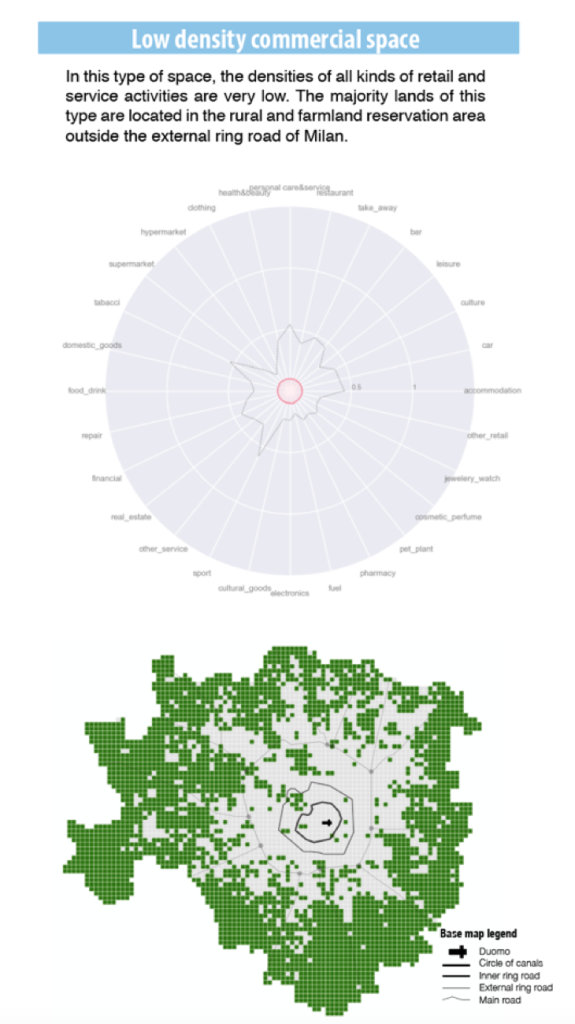This study aims to classify the land use types in the city with hierarchical agglomerative clustering algorithm. The study is part of my Master degree thesis at Politecnico di Milano supervised by Prof. Eugenio Morello and Prof. Zhiqiang Siegfried Wu. The second part of the study could be found here.
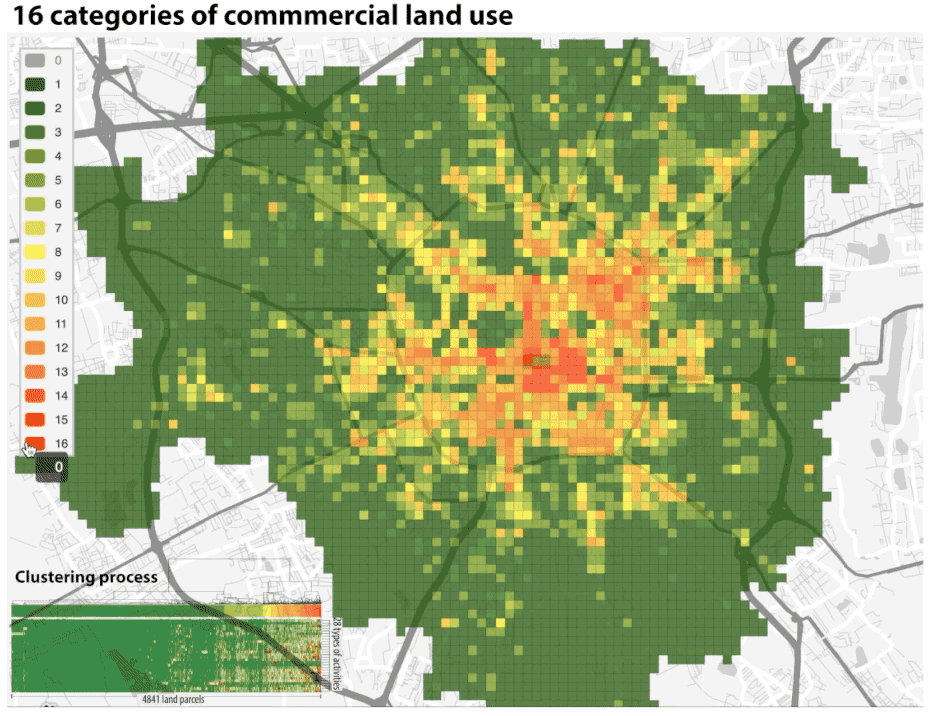
To date, urban land bears a variety of commercial activities, and it is difficult to define land use by a single type. Unsupervised learning enables us to find common characteristics among large samples. By using the hierarchical agglomerative algorithm, 150,000 commercial-activity-related POIs in the 200m*200m grid are classified into 16 patterns in Milan.

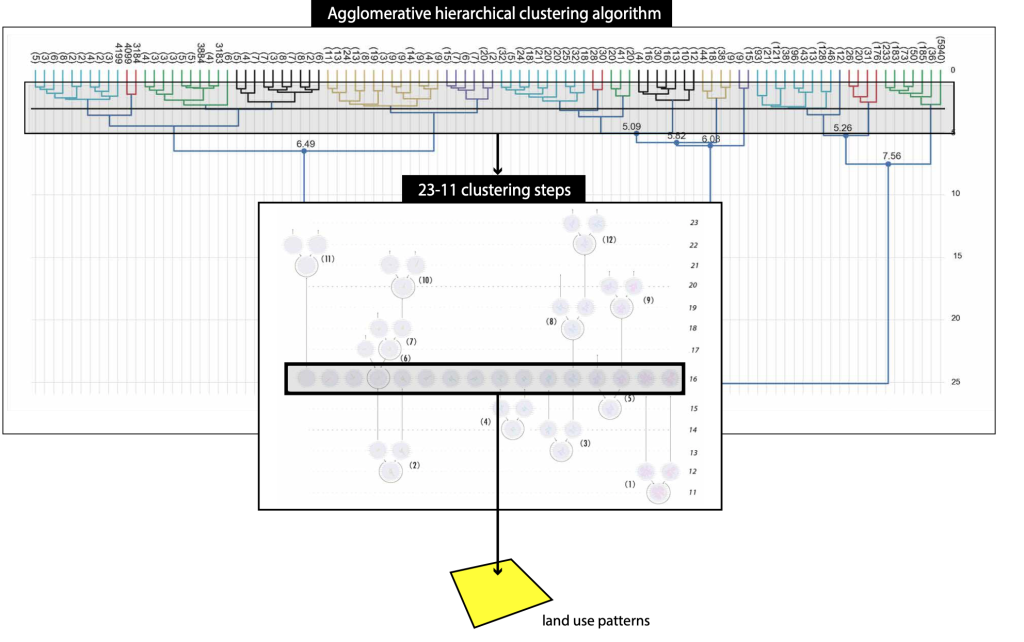
The “cost” of merging two groups is regarded as a function of the cluster number. The cluster number which is just before the sudden increase of the “cost” is considered as the optimum one. The final clustering number is firstly narrowed down to the range of 11-23 with the “elbow” point method. Then we reviewed every merging step with radar chart visualization from the perspective of urban planning. Finally, all 4852 unit cells are clustered into 16 categories of commercial land use patterns.
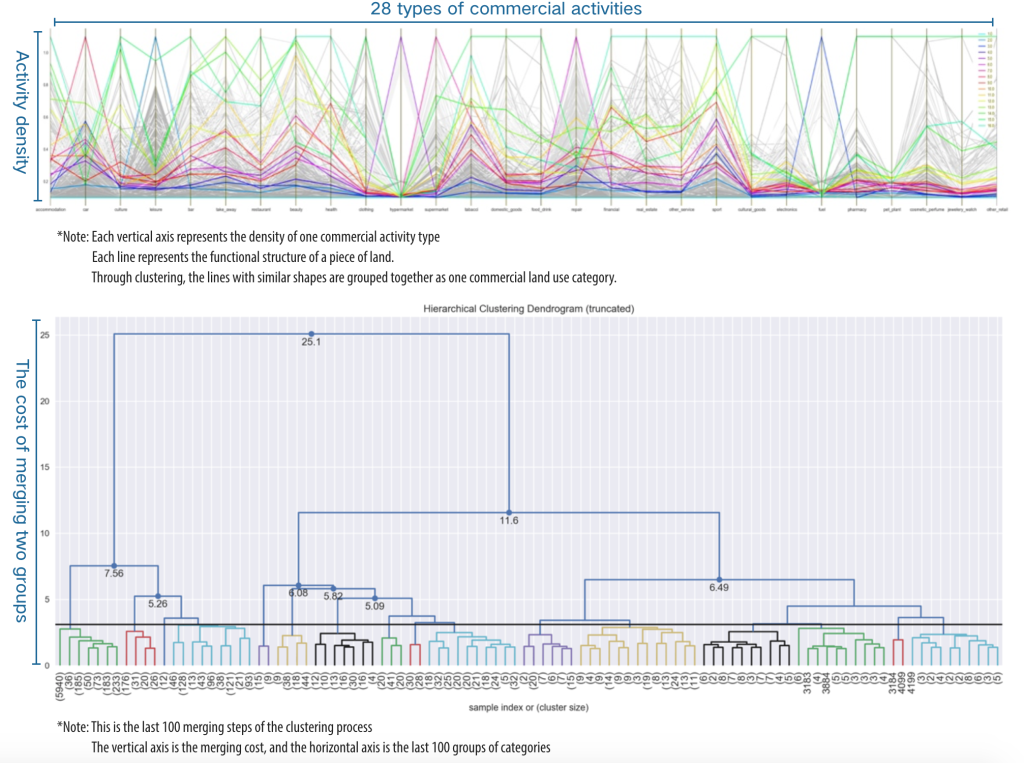
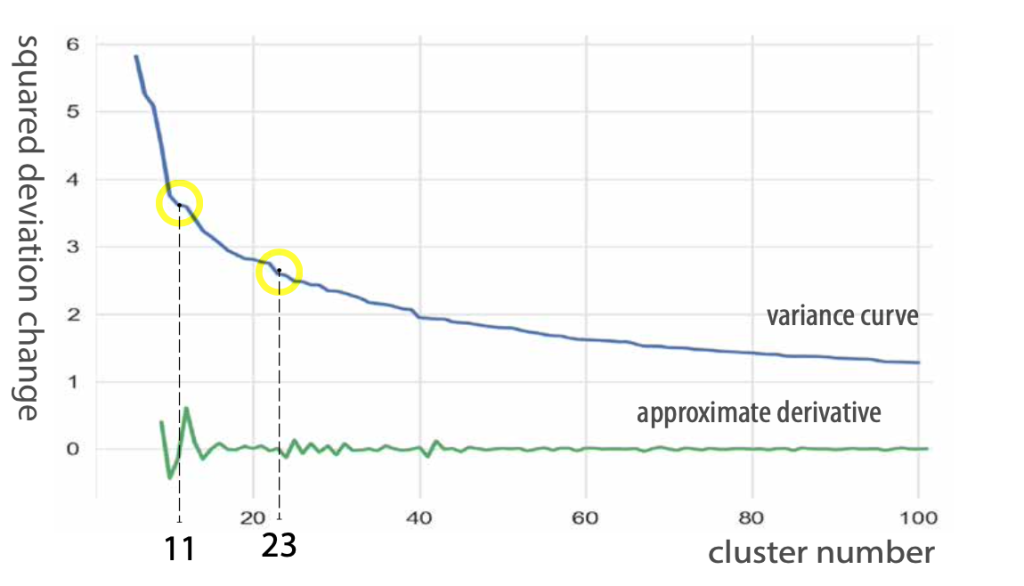
Based on the density characteristics and spatial patterns of the 16 clustering categories, 6 principle categories of commercial space could be further summarized:
1) Daily commercial space ;
2) Specialized commercial space;
3) Specialized daily commercial space; 4) Mixed-use commercial space;
5) Commercial center space;
6)Low density commercial space.
The result of the recognition shows that Milan is a mono-centric city with public transportation stretching out as the fundamental infrastructure for radiant commercial development.
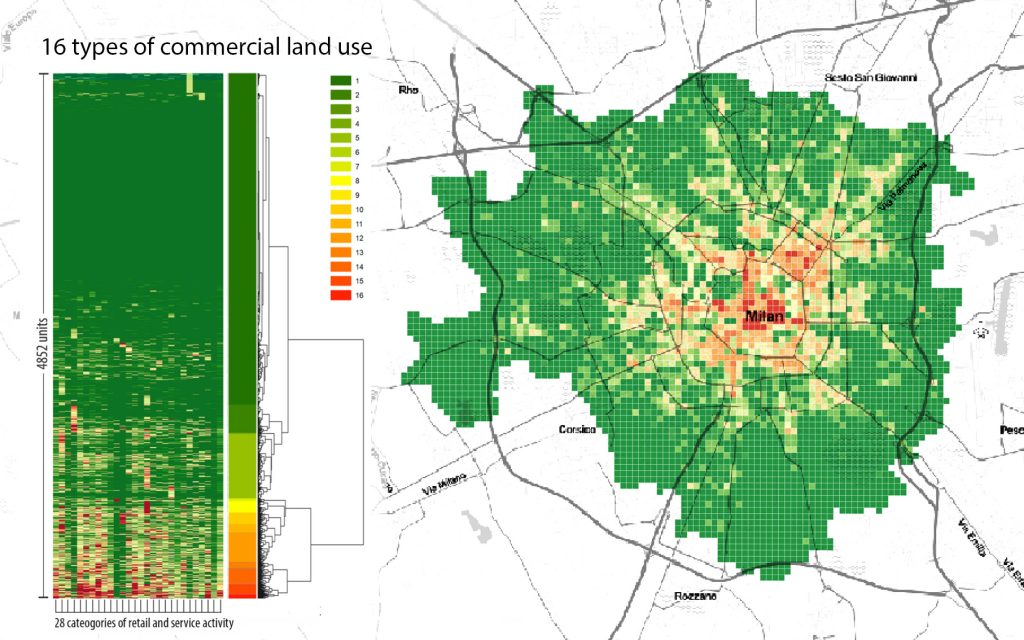

Specialized Daily Commercial Space
This kind of commercial activity space can be considered as the integration of the daily commercial space and specialized commercial space. The overall density structure is similar to that of the daily commercial space and a certain type of the commercial activity has a very high density compared with other activities.
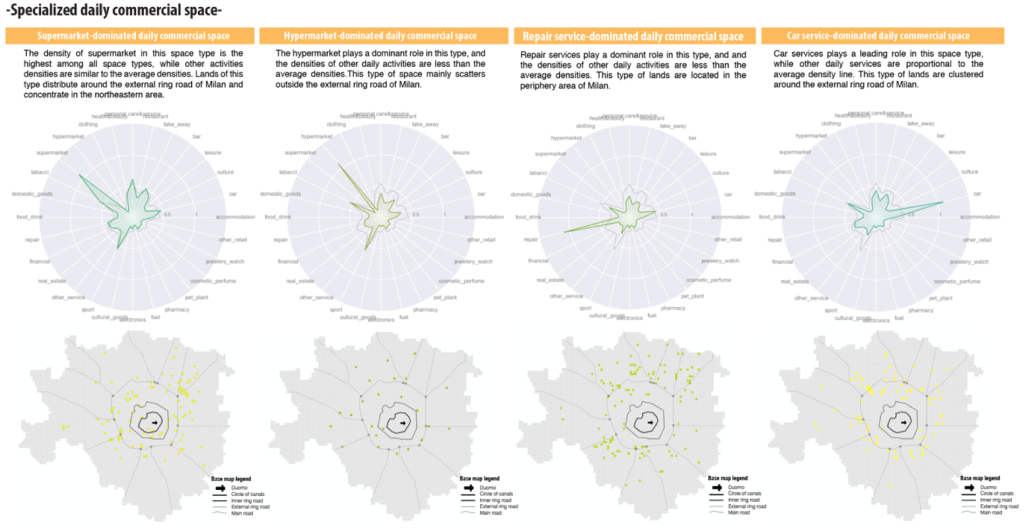
Commercial Center Space
Multiple retail and service activities aggregate in the same area with extremely high densities. There are three sub-categories: shopping center space, sub-shopping center space and super shopping complex space.
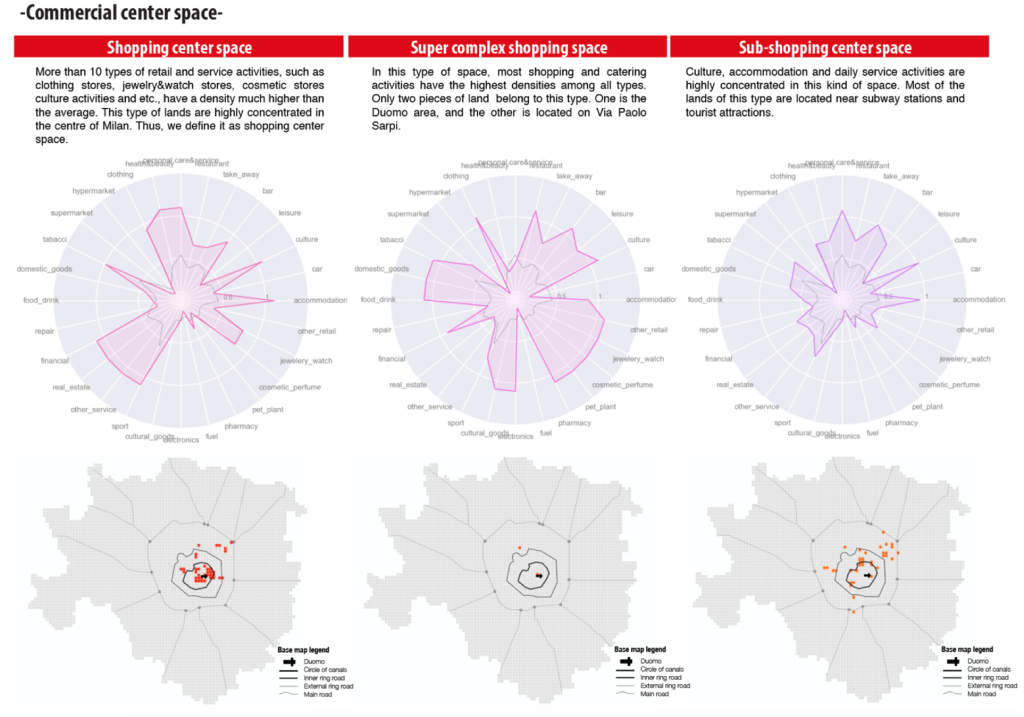
Mixed-use Commercial Space
Different from specialized commercial space, the mixed-use commercial space has two or more types of high-density commercial activities at the same time and has no obvious dominant commercial activity type.
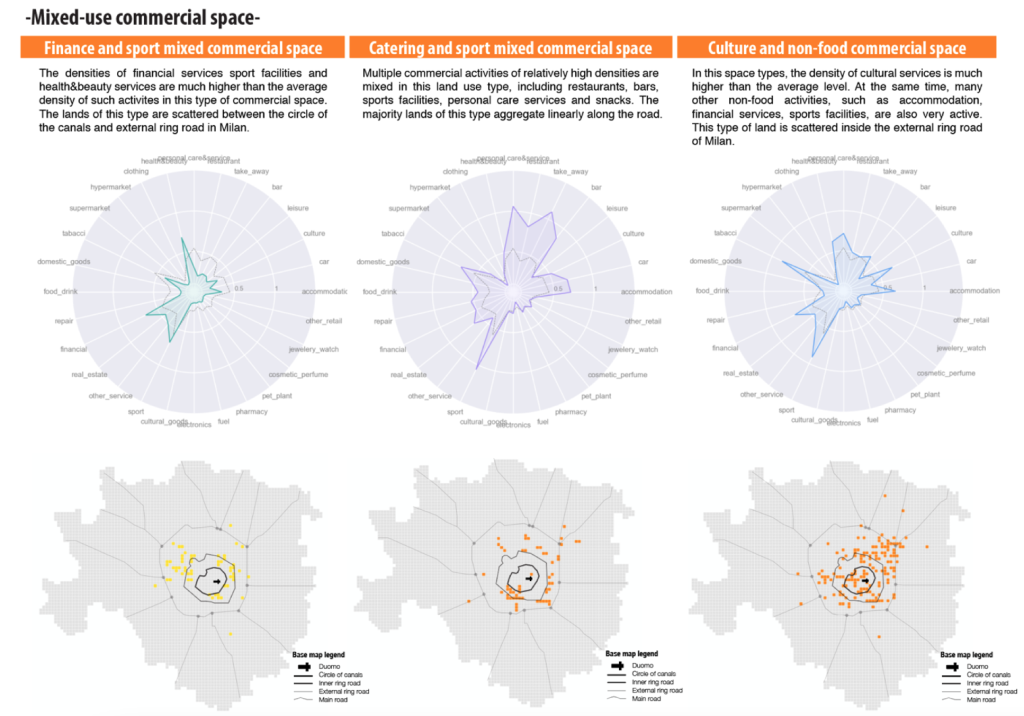
Daily Commercial Space
The density of snacks, tabacchi, sports facilities, and personal care services are significantly higher than that of other activities. The overall density structure are proportional to the global average radar curve.
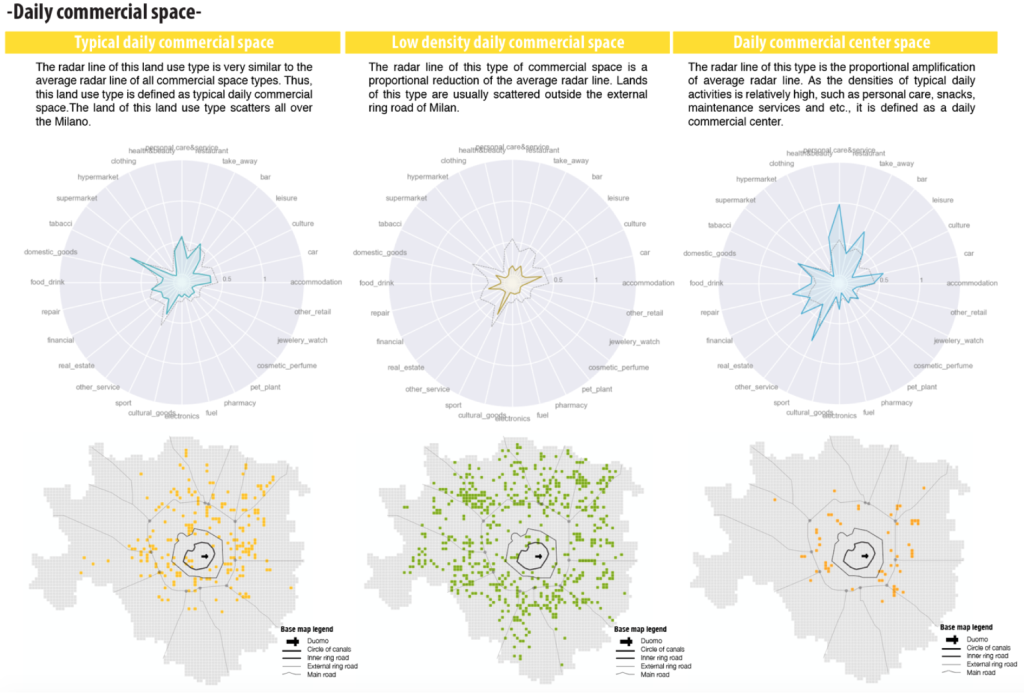
Specialized Commercial Space
It includes two sub-categories: leisure activity aggregation space and car service aggregation space. In this kind of commercial space, one or two types of activities play a dominant role, while the density of other activities types is much lower than the average density.
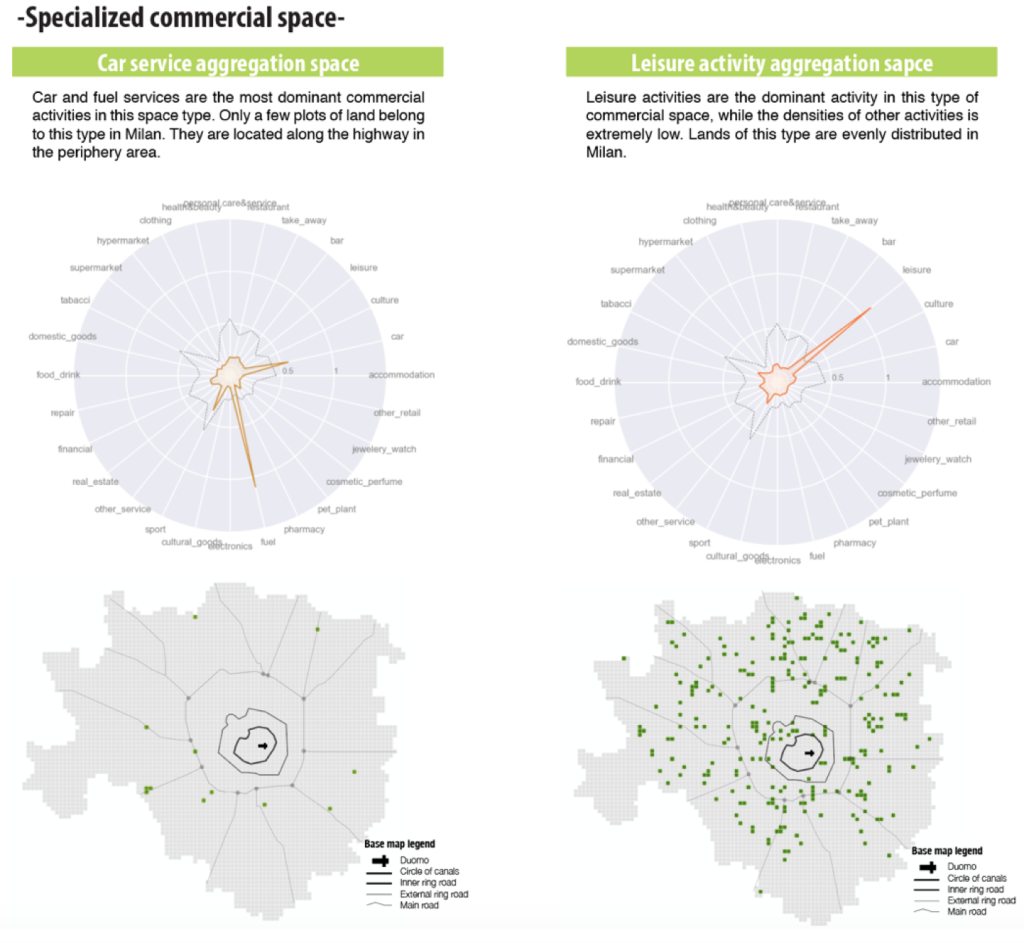
Low Density Commercial Space
In this category, the densities of all types of commercial activities are very low. The majority lands of this category are located in the periphery area of Milan.
